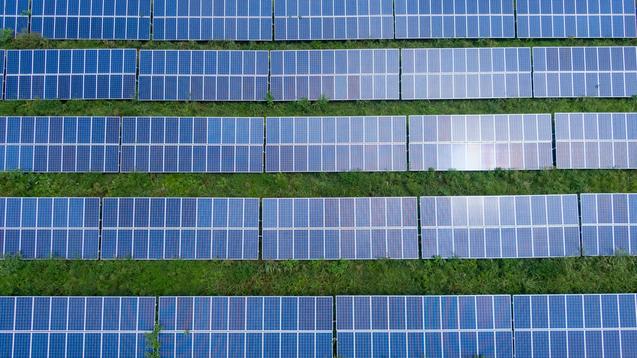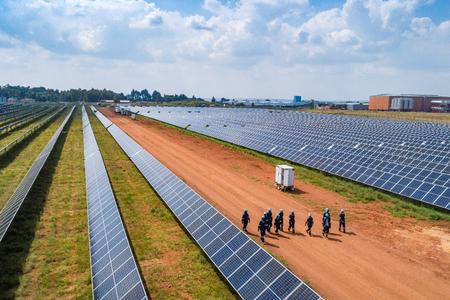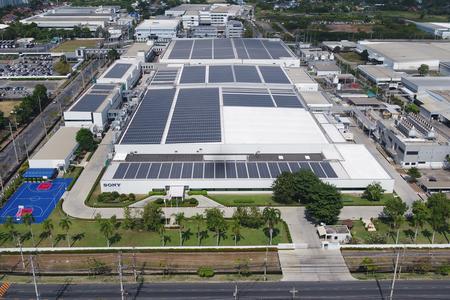The hardware, software, and services of the world’s technology companies are a pivotal part of modern life.
When trying to gauge the monetary value of the global tech industry, you find yourself staring at numbers on an almost incomprehensible scale. Of course, the incredible growth of the sector over the past few decades came with an environmental impact. It’s estimated that data centres alone use 1% of electricity globally. The production of hardware that sits on our desks or slips into our pockets also leaves its mark, and semiconductor manufacturing is projected to use 286 terawatt hours of electricity globally by 2030 - higher than Australia’s entire electricity consumption in 2021.
With further growth expected in tech fields such as artificial intelligence and virtual reality, the electricity demand of this industry looks set to increase in the future. It’s vital therefore that the industry plays its part in the energy transition, making the switch to a more efficient use of energy, and 100% renewable electricity for all of its operations.
We spoke to two of our members in the technology industry, Adobe and Sony, to learn more about their climate progress, and why they decided to go beyond just playing their part and bring forward their 100% renewable electricity targets.
What does being an RE100 member mean to you?
Adobe joined RE100 in 2015 and Sony in 2018.
“As a member of RE100, Adobe is proud to collaborate with many of the world’s most influential businesses to collectively accelerate change towards zero carbon electricity grids globally by 2040. No one company or organisation can solve the climate crisis, but together with RE100, we can help accelerate the transition to a zero-emissions economy,”
“As a member of RE100, Adobe is proud to collaborate with many of the world’s most influential businesses to collectively accelerate change towards zero carbon electricity grids globally by 2040. No one company or organisation can solve the climate crisis, but together with RE100, we can help accelerate the transition to a zero-emissions economy,”
For Sony, being a member of RE100 is extremely valuable as it helps it “gather global insights on renewable electricity in different markets which can support our offices and factories. This helps us to push our activities forward with confidence.” As a member, Sony says its voice is amplified by those of other large corporates – which sends a signal around the world that corporates demand access to “more affordable, ample and stable renewable electricity”.
Why did you decide to increase your ambition with RE100?
According to Keiko Shiga, General Manager, Environment Section, Sustainability Department at Sony Group Corporation, “climate change is a global issue, and it affects everybody. As a global company, it’s important to us that the Sony Group should be proactive on its own impact.” When Sony joined RE100 it set itself a 2040 100% renewable electricity target for its operations, but as the impacts of climate change become more apparent by the day, the company felt that it could be showing leadership and push for more ambition. The transition to a decarbonised society has become an urgent issue and so, in 2022, Sony brought its target forward to 2030, “to be in line with our Road to Zero environmental plan which we launched in 2010 aiming at achieving a zero environmental footprint by 2050.”
Similarly, Adobe recently accelerated it’s 100% renewable electricity target from 2035 to 2025 for its operations, because it “sees sustainability as an incredible driver of innovation that is good for both business growth and environmental stewardship.” According to Adobe, this increase in ambition can be partly attributed to “renewable wind and solar electricity as part of new builds, instead of buying renewable energy certificates (RECs) from existing projects.”
What changes did you need to make to drive your increased ambition?
For Adobe, the “Global Site Operations team led the effort and evaluated the scale and size of this transition to ensure we could be more ambitious. We made fast progress and completed several large renewable energy projects over the past six years to reduce our scope 1 and 2 emissions – including directly purchasing renewables through solar and wind farms and other reputable providers.”
Adobe told us it’s on track to hit its new 2025 target, which is an impressive decade ahead of its initial goal. “Adobe is bringing a new solar project online this year with one of our providers to address approximately half of our remaining non-renewable electricity usage. We anticipate expanding our supplier partnership and supporting an additional solar project that will help us exceed 90% renewable electricity for our operations, in addition to using RECs to close the gap by 2025.”
Sony’s increase in ambition happened because employees working on its Road to Zero plan were asked by senior management if the plan was sufficient.
“We saw that [the number of] companies announcing their net zero plans was increasing, and our target of achieving net zero by 2050 might not be ambitious enough. We were asked by our senior management if our target year was truly sufficient,”
“We saw that [the number of] companies announcing their net zero plans was increasing, and our target of achieving net zero by 2050 might not be ambitious enough. We were asked by our senior management if our target year was truly sufficient,”
Sony decided to accelerate each target within its Road to Zero plan by 10 years – this included its RE100 target. Sony told us that through the “acceleration of energy saving, installation of solar power generation equipment, and introduction of renewable energy throughout the Sony Group” it will meet its more ambitious RE100 target.
What’s next in your renewable electricity journey?
Sony wants to “encourage business partners of the Sony Group, such as those engaged in parts, materials and finished product manufacturing, to manage their greenhouse gas (GHG) emissions, save energy, and convert to renewable energy to reduce the amount of GHG emissions throughout the entire supply chain.” Contributions to carbon removal is another area of development for Sony. For example, investments in “startups engaged in carbon removal and other related areas through the Sony Innovation Fund: Environment.”
Adobe’s operational sustainability goals also extend to how it works with its suppliers – targeting 55% of the company’s spend to be with suppliers who have their own science-based climate targets. One example is Adobe’s newest office building at its headquarters in San Jose, California. “Known as Adobe Founders Tower, this 1.2 million square foot office represents the first all-electric building of its scale in Silicon Valley powered by 100% renewable solar and wind-powered energy. The building also includes 50,000 square feet of kitchen space complete with induction cooking technology (including an all-electric pizza oven) – making it the largest all-electric commercial kitchen in North America.” Following the opening of Founders Tower, Adobe is exploring electrification of its four major US sites. Adobe also told us that its climate work “is never really done since committing to 100% renewable electricity has no end date – it must be maintained once the goal is met.”
Do you have any advice for other RE100 members looking to bring forward their targets?
For other RE100 members looking to up their ambition, it’s best to “set ambitious goals with realistic milestones, and get your stakeholders on board. We are fortunate to have a passionate and supportive leadership team at Adobe that prioritises our sustainability initiatives and commitment to climate action.”
Keiko from Sony echoed these thoughts, urging RE100 members keen to increase their ambition to “start early.”
By bringing forward their RE100 targets, and making strides towards their improved goals, these two tech companies are frontrunners in this industry. They are paving the way for more climate friendly tech to be at your fingertips.
Learn more about RE100 here and find out how to join the initiative here. If you’re already a member, speak to us to learn more about increasing your ambition.



